
Drying Out After a Wet, Wild Weekend
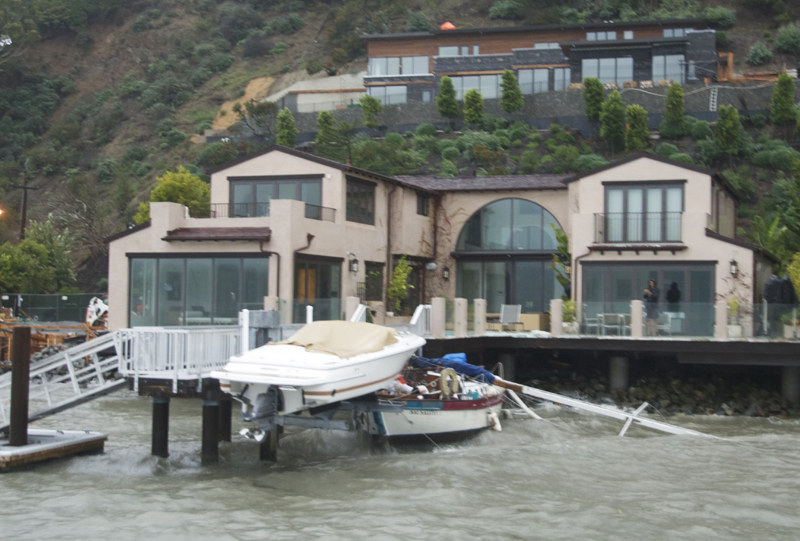
Bay Area sailors who’d been curious about the effectiveness of their cockpit scuppers and bilge pumps got their answers over the weekend, as the final volley of a three-storm series walloped the region with torrents of rain and gusts higher than 50 knots.
We’re not aware of any deaths or serious injuries that resulted from the storms — the first of which began pummeling the Bay Area Wednesday — but there was plenty of damage. In a number of marinas, loosely stowed roller-furling jibs blew open, in some cases tearing before they could be contained; several boats were dismasted; blue polypropylene tarps shredded like serpentine streamers; and bilge pumps worked overtime. Roughly four inches of rain fell in and around the Central Bay, while Santa Cruz and Monterey saw twice that amount.
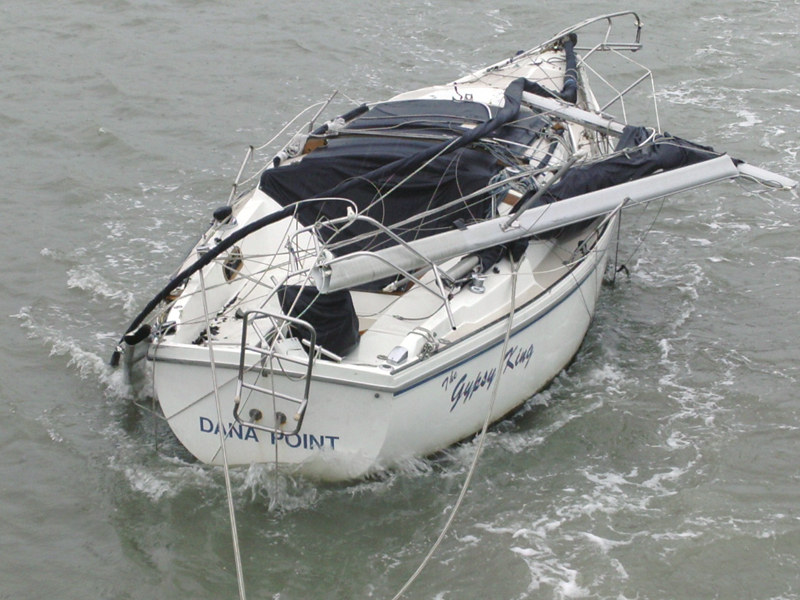
The messiest results of the storms were probably in Richardson Bay, which lies between Sausalito and Belvedere. At least a dozen (mostly derelict) boats went adrift, in some cases nearly ending up as lawn ornaments for pricey homes in Belvedere and Tiburon.
Not surprisingly, some races were cancelled, although both the Golden Gate YC and the Sausalito YC got off their midwinter races (Saturday and Sunday respectively). Richmond YC cancelled all racing, with the exception, ironically, of their Opti program, in which stoic junior sailors can be seen perfecting their skills on the even the nastiest winter weekends.
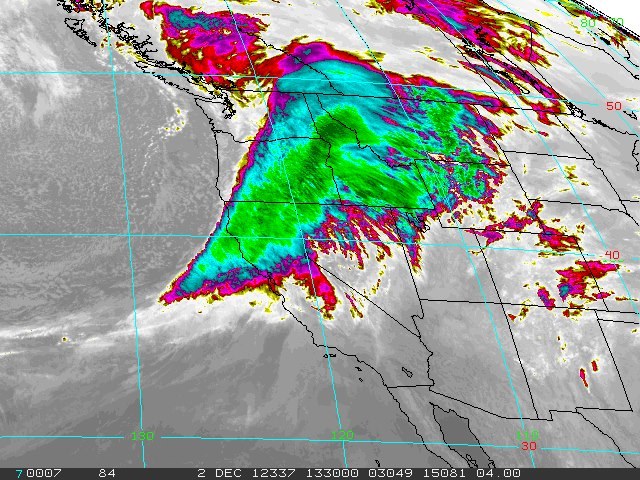
As wet and wild as conditions were for boaters, however, conditions seemed worse in many shoreside areas. More than 300,000 Bay Area PG&E customers lost power at some point during the storm, nearly 200 flights were cancelled at SFO, traffic accidents were predictably abundant — including a big rig flipping on the Richmond-San Rafael Bridge — and, according to the San Francisco Chronicle, so much runoff water backed up into the City’s sewer system that it blew a manhole cover eight feet into the air.
The good news? Well, most boat decks are now cleaner than they’ve been in months, and the next round of rainstorms — expected Tuesday or Wednesday — is predicted to be wimpy and inconsequential compared to what we’ve just been through. So enjoy the sun today. In fact, you might even want to go out for a sail!
And the Hits Just Keep Coming
Records have been breaking left and right over the last several days. First we reported that Paul Larsen broke his own on-the-water sailing speed record of a few days before — first with 59.37 knots over 500 meters on November 16, then again with 65.45 knots on November 24 sailing on Namibia’s Walvis Bay with his innovative Vestas Sailrocket 2. Larsen is applying to the World Speed Sailing Record Council for a second record: a peak sailing speed of 68.01 knots. The council has already ratified the first record, noting that it took Larsen just 14.85 seconds to cover 500 meters, but the latter is still awaiting ratification.
Moving farther down the African continent to the Cape of Good Hope, the lead pack of five boats in the Vendée Globe are passing through the Aiguilles ice gate. Over the course of 48 hours, four boats smashed the 24-hour speed record of 468.72 nautical miles, previously set by Alex Thomson in 2003. The first to break it was François Gabart (MACIF) on December 1, after covering 487.23 miles in 24 hours. As his record was being submitted for ratification by the WSSRC, Jean-Pierre Dick (Virbac Paprec 3) beat it with 498.8 miles covered, and then a few hours later, beat it again with an incredible 502.23 miles, averaging — averaging! — 20.9 knots. Shortly thereafter, Thomson (Hugo Boss) broke his previous record with 473.87 miles, and Bernard Stam (Cheminées Poujoulat) was the last to do it with 482.59 miles.
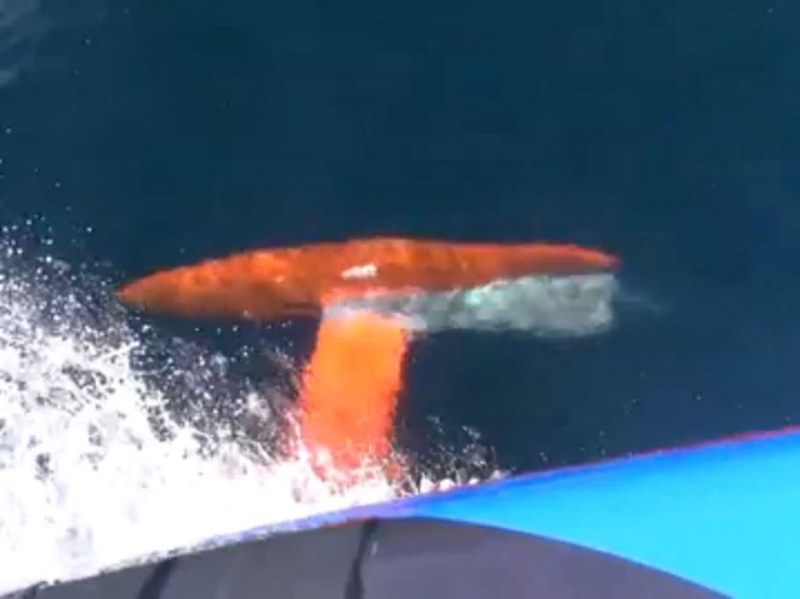
Today it was announced that Armel Le Cléac’h (Banque Populaire) is the holder of a new race record for the fastest trip from the start at Les Sables d’Olonne to the Cape of Good Hope. At 22d 23h 48m, he demolished Vincent Riou’s ’04 record by about 27 hours, and was also the first skipper in the race to pass the Cape of Good Hope.
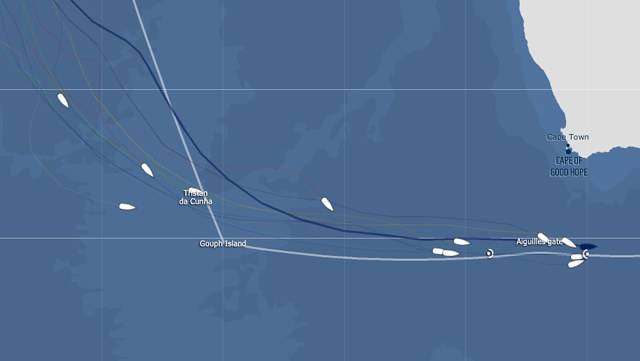
Cléac’h has held the lead for most of the race, but gave it up to Jean-Pierre Dick on Saturday and regaining it yesterday. Alex Thomson also made a surprise leap in the standings last week by moving up from fourth to second, though he’s currently in fifth place. The shuffling of the leaderboard has made this a very compelling race. Keep track of all the news at www.vendeeglobe.org/en.
Favorite AC Quotes from Loïck Peyron
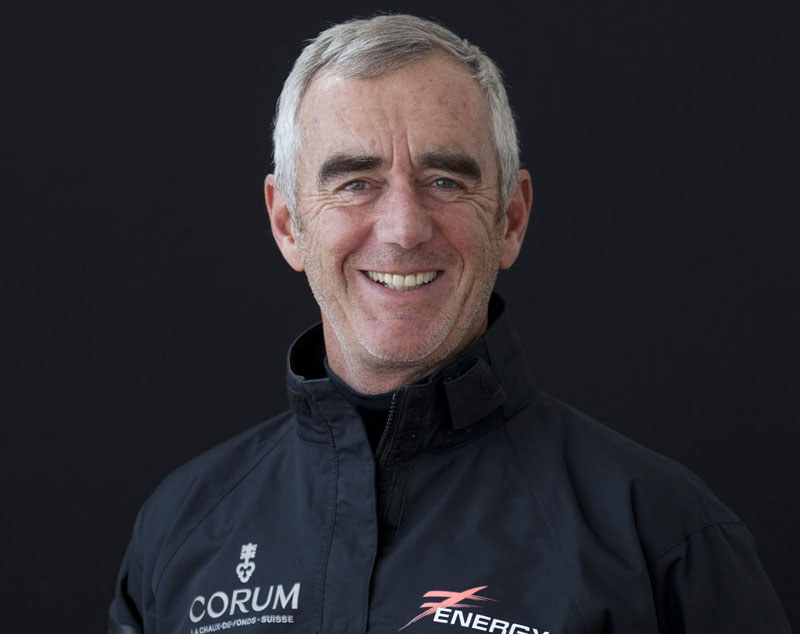
The 34th America’s Cup is among the strangest ever for all kinds of reasons, not the least of which is the fact that Loïck Peyron, the great French sailor, is not only the helmsman for the French Energy Team in the America’s Cup World Series, but he’s also the "test pilot" for the Artemis Racing’s new AC72. The football analogy would be if 49er quarterback Colin Kaepernick spent the middle of the week working out with the Green Bay Packers receivers, then on Sunday started for the 49ers against the Packers. It’s not a perfect analogy, of course, because Team Energy is not building an AC72 and therefore Peyron won’t be racing on one. Heck, we don’t even know if they got their 45 back after that salvage claim.
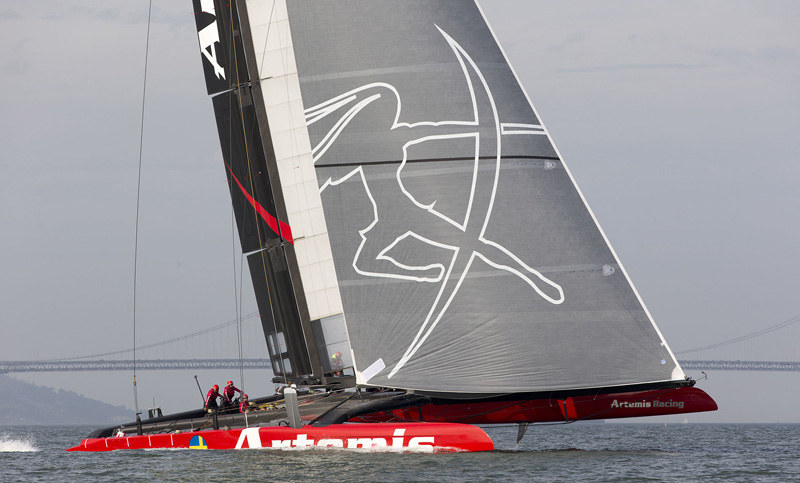
This team allegiance awkwardness didn’t stop Team Energy from posting an interview with Peyron about his first four sails aboard the Artemis AC72.
"It’s a bit like putting a V-8 or V-12 engine on a go-kart," was Peyron’s response to the question of how powerful the AC72s are. Mind you, Peyron is no stranger to racing big multihulls, having been almost untouchable with the 60-ft tri Fujicolor in the ’90s, and having most recently set the around-the-world sailing record — 45 days — with Banque Populaire V, which at 130-ft is nearly twice as long as the AC72s. (She reached speeds over 43 knots and averaged 26.5!)
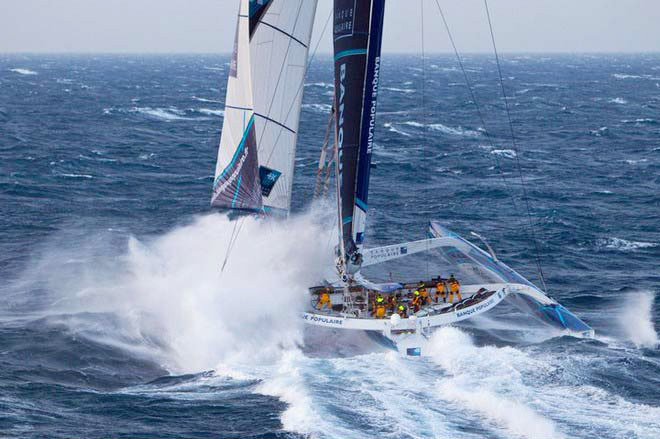
"Of all the boats I’ve sailed on, she [the AC72] is the trickiest," said Peyron in our second favorite quote. This is from a 53-year-old who has been hardcore ocean racing on every kind of monohull and multihull since the late ’70s. If Loïck says the big cats are tricky, you can take it to the bank. Or Banque.
In other fun America’s Cup news, Brit Ben Ainslie, who earlier in the year became the first person to win medals in five different Olympic Games, including four golds, announced that he’s retired from Olympic sailing in favor of the America’s Cup. While we can’t be sure of his motives, we suspect it is the same that Willie Sutton had for visiting banks — that’s where the money is.
BREAKING NEWS: Super Typhoon Bopha Skirts Palau
Islands of The Philippines are currently taking a beating from Super Typhoon Bopha, which skirted Palau yesterday. We just learned that at least two West Coast sailors weathered that blow as it passed.
Richard and Leora Roll (66 and 65 repectively) left Seattle in 2010 aboard their Beneteau 45 Before on a five-year Pacific cruise. Thus far, the trip has taken them to many of the North Pacific’s prime scuba diving locations, including Hawaii, Kwajalein Atoll, Yap Island, and presently Palau, which is considered to have some of the most pristine coral reefs in the world.
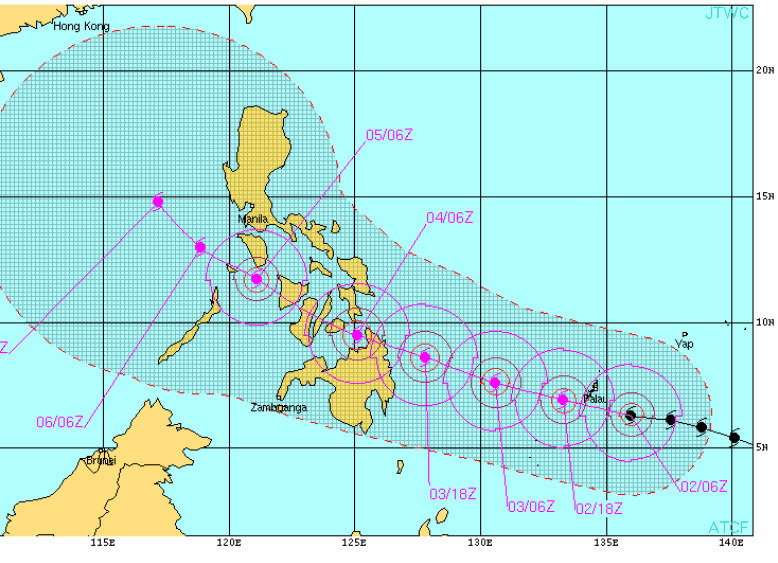
Hopefully those reefs are still intact after yesterday’s blasting — along with the Rolls’ vessel. As explained in recent emails, they elected to leave Before in a well-protected spot on Rock Island. “We have laid out all four anchors — two on the bow, two astern,” wrote Richard yesterday. “We took four lines ashore above the tide line away from rocks, tied to trees at their base. Everything is stripped or lashed. When we learned this was to be a direct hit as a category three or four, I figured there was nothing we would be able to do, working on deck in 100-130 knots.”
So they loaded up their dinghy with essential documents, clothing and fuel, and make the 10-mile crossing back to Sam’s Tours, a dive operation in Malakal Harbor, in the town of Koror.
Having easily survived the blow at Koror, which only saw 50 to 60 knots, the couple now has to endure an uneasy wait until sea conditions subside enough to return to their boat. The nearby islands of Angaur and Peleliu experienced stronger winds and flooding in some of the coastal villages.
Back in the ‘80s, the Rolls did a previous Pacific circuit aboard their Catalina 30. After crossing from the West Coast to the Marquesas, they eventually circled north to Palau and Japan.
